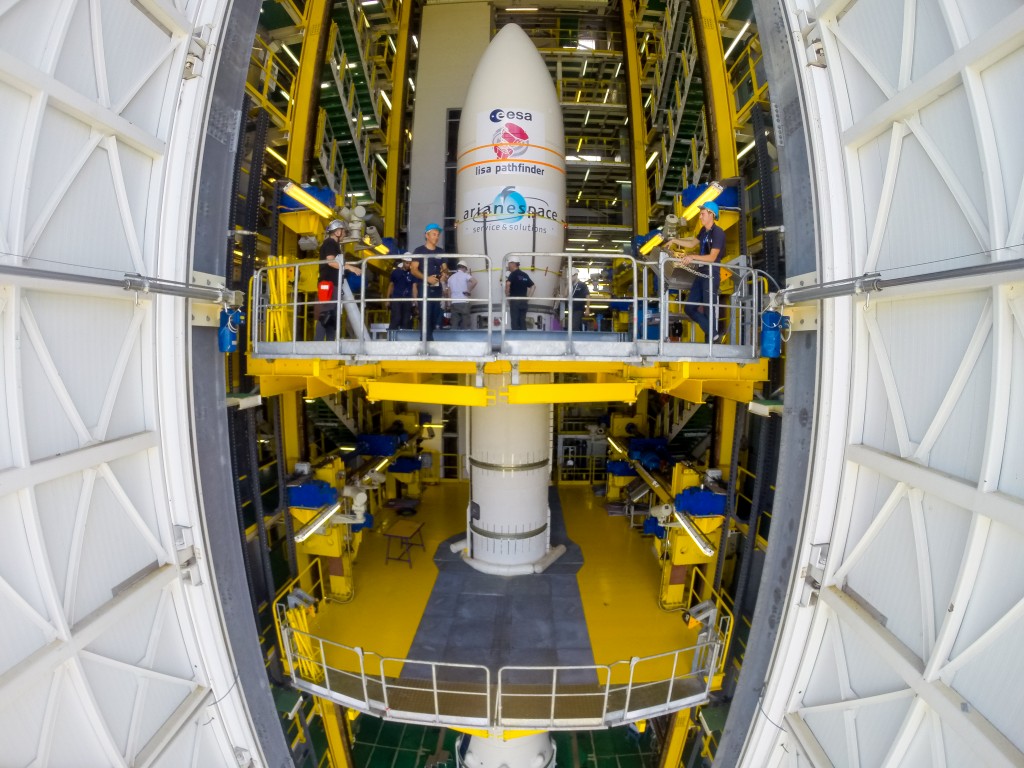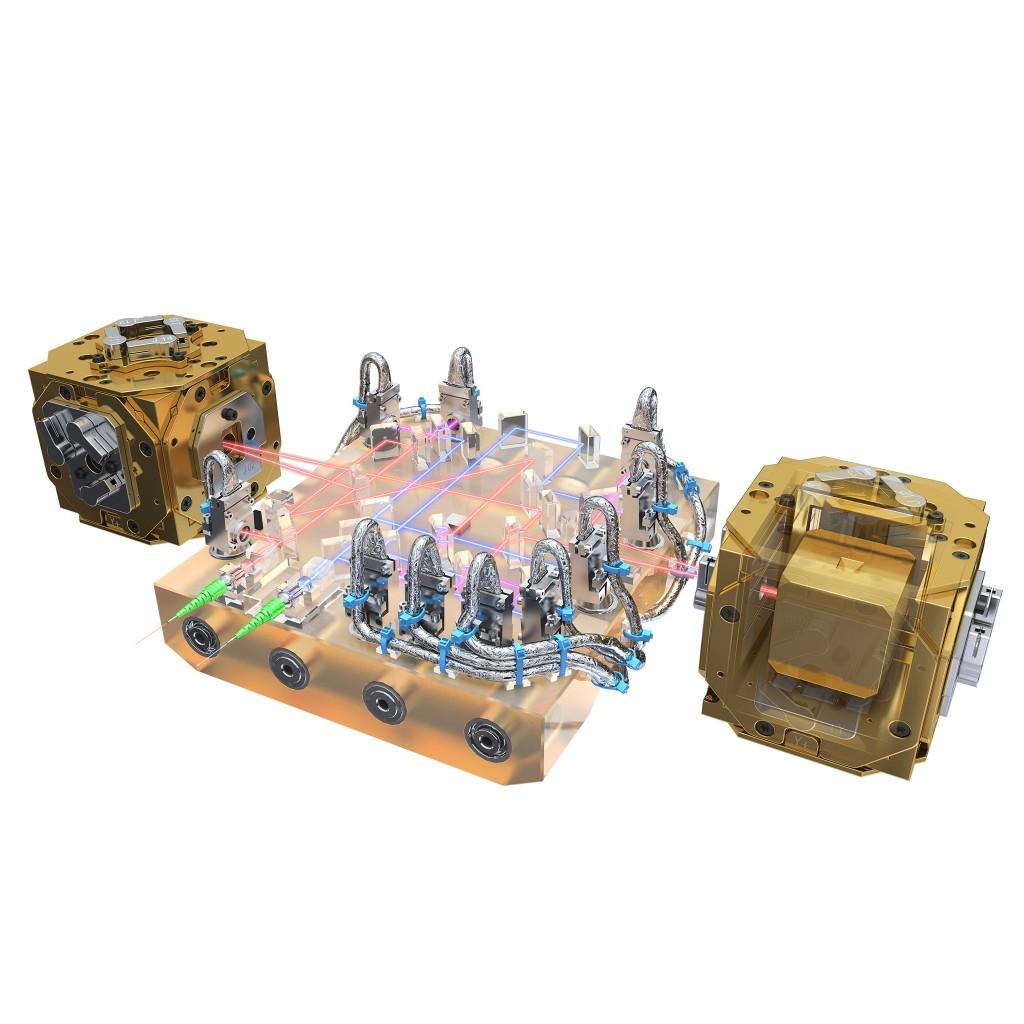Chasing Unicorns
- By Ira Thorpe
- December 3, 2015
- Comments Off on Chasing Unicorns
Although the incident happened nearly ten years ago, I still remember it clearly. I was a newly-minted NASA scientist and was attending a workshop about future space-based scientific facilities. At a coffee break I started chatting with some other young scientists, one of whom asked what I worked on. I explained with all of my youthful enthusiasm after which one of the other scientists replied, “Oh, you work on a unicorn telescope.” I was confused. “I’m sorry?” I asked. “Something that doesn’t exist,” she replied. It wasn’t personal, just a cynical remark from someone who might have been having a bad day. I brushed it off at the moment, but the comment got to me. The assumed meaning was clear, I was on a quixotic quest for something that did not, and would never exist. I wasn’t doing real science.

Have you seen this telescope?
Credit: This woodcut is an illustration from the book The history of four-footed beasts and serpents. by Edward Topsell, printed by E. Cotes for G. Sawbridge, T. Williams and T. Johnson in London in 1658.
To be fair, feeling some doubt when I explain my research topic is probably a healthy response. The ultimate goal of my research is the observation of gravitational waves – ripples in spacetime itself – using the largest instrument ever conceived by human kind. The instrument is most well known by it’s acronym “LISA”, which stands for Laser Interferometer Space Antenna and it consists of three spacecraft forming a triangular constellation five million kilometers on a side. The area encompassed by this constellation would fit seven Suns. A signal traveling on the laser beams that trace out the triangle’s legs would take 16.7 seconds to travel from one spacecraft to another. And yet, the instrument will be capable of measuring fluctuations in the shape of the constellation at the level of a tens of picometers. A single hydrogen atom is nearly 100 picometers in diameter. And the three LISA spacecraft must perform this measurement continuously, autonomously, orbiting the Sun along a trajectory that trails Earth by 50 million kilometers. So, some skepticism is perhaps understandable.

Artist’s concept of a single LISA spacecraft, showing the laser links with the other two spacecraft. Credit: elisascience.org / Albert Einstien Institut
Through the ups and downs of the intervening ten years, the “unicorn comment” has stuck with me. In the bright times, like in 2010 when a major review of the field of astronomy and astrophysics conducted by the US National Research Council recommended LISA based on its “compelling science case,” I felt that I was the one who had persevered and actually caught my unicorn. In the dark times, like in 2011 when NASA and ESA ended their decade-old partnership on LISA due to funding disagreements, thoughts that I might be throwing away my career chasing a unicorn would creep up on me. Right now is a good time, probably the best of the last ten years.
Whenever LISA would be reviewed by an expert advisory committee, it would always score off the charts in terms of science potential but would sometimes lose points on the readiness of its technology. So ESA and NASA decided to partner on a dedicated technology demonstrator called LISA Pathfinder that would demonstrate these technologies and clear the way for building LISA. Pathfinder has faced trials as well: cost overruns, schedule slips, and technical glitches but last night it rode a 9-story rocket into a elliptical “parking orbit” around Earth. In a few weeks, it will journey to its operational orbit around the first Sun-Earth Lagrange point, a million miles away from Earth in the direction of the Sun. There, it will begin its mission of demonstrating the technologies needed to detect gravitational waves in space. The team, including this NASA scientist, is ready to show the world what it can do.

CAPTION: LISA Pathfinder resting on top of the VEGA launcher in Kourou, French Guiana on November 20th, 2015. Credit: ESA–Manuel Pedoussaut
What makes LISA Pathfinder special – its superpower if you like – is that it can stay really, really still. While this might not seem like much of a superpower, it’s essential if you want to detect gravitational waves. Deep inside LISA Pathfinder are two cubes of a special Gold-Platinum alloy, chosen for its insensitivity to magnetic fields, each measuring 46mm on a side. Each cube is housed inside an enclosure whose surface is covered with electrodes. During the launch, a clamp mechanism held the cubes in place to prevent them from rattling around and destroying their delicate housing. Sometime in February, a command will be sent to the spacecraft to release the clamps, after which the test masses will be in free-fall inside their housings.

The core of Pathfinder consists of two 46mm cubes of gold-platinum, each free-falling inside an electrode housing that is bolted to the spacecraft. A precision laser interferomter (center) tracks the position of the test masses with picometer precision. Credit: ESA/Medialab
By measuring the electric capacitance between the electrodes in the housing and the cube, the spacecraft can determine the precise position and angle of the cube and can adjust it either by applying a small electrostatic force on the test mass or by moving the entire spacecraft using a micropropulsion system. The end result is a delicate, slow-motion dance between a 420 kilogram spacecraft and two 2kg test masses. The purpose is to maintain the purity of the free-fall of the test masses to a level of roughly 10-16 g, where 1g is the acceleration we experience due to Earth’s gravity. The relative motion between the two test masses will be measured by Pathfinder’s laser interferometer.

This full-size model of Pathfinder’s test mass is made of plastic because the author couldn’t get his hands on $70,000 worth of gold and platinum. Credit: Ira Thorpe
If Pathfinder is successful, all that’s left to do is cut the spacecraft in half, expand the distance between the two test masses from 38cm to 5 million kilometers, and add some telescopes and a more powerful laser to make sure the beam can make the trip. While we’re at it, we’ll need to add two more 5 million kilometer arms to build up the full LISA constellation. While that might sound like a big step, what makes Pathfinder so important is that it contains nearly every component that is necessary to build LISA. There are a few more technical details that will need to be worked out, and of course the matter of funding, but I’m confident that unicorn is nearly in the bag.
As Pathfinder continues its progress, I’ll continue to blog about our experiences together. In the meantime, you can follow along at lisapathfinder.org and on Twitter at @ESA_LPF and @IraThorpe. To close, here’s a video from ESA summarizing Pathfinder:


